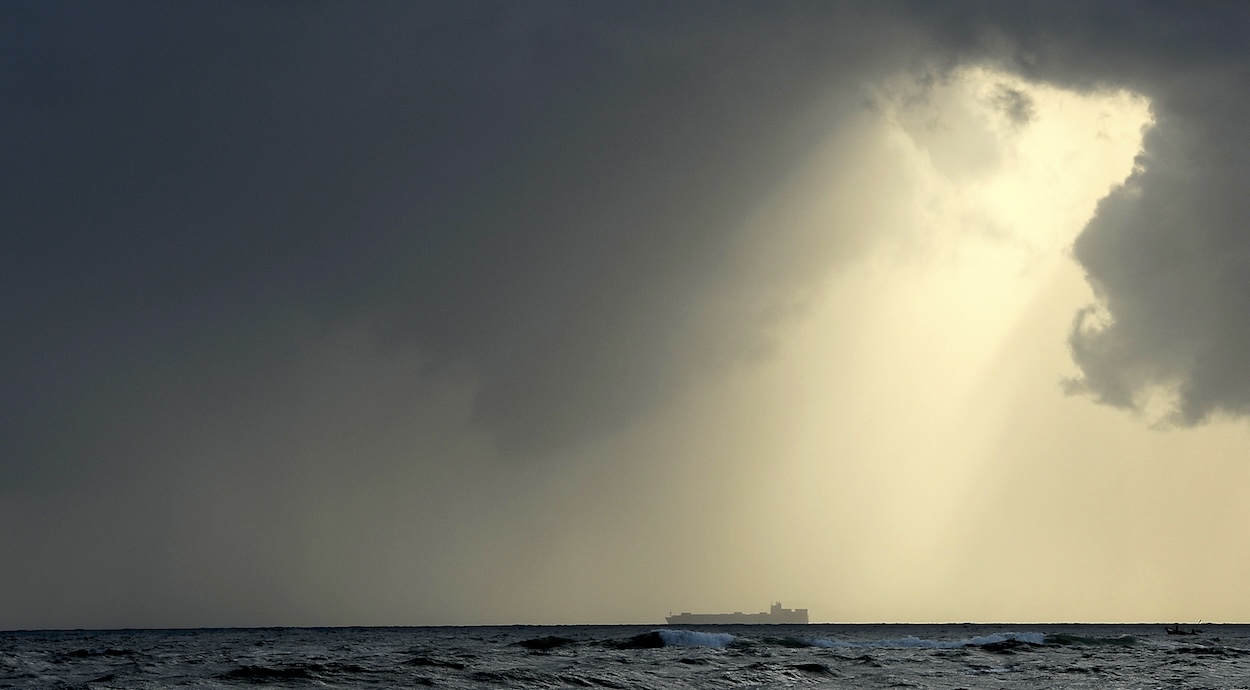It is a little unsettling that the merchant ship MV Ruby is anchored off Margate, carrying 20,000 tonnes of Russian ammonium nitrate. This is seven times the amount of ammonium nitrate that caused the Beirut explosion in 2020, which killed 218 people and injured 6,000. While ammonium nitrate is usually sold as plant fertiliser, it can also be used in explosives. Some worry that there is a bomb a third of the size of the one detonated over Hiroshima within striking distance of London.
Since leaving the White Sea port of Kandalaksha in July, the 23,760-tonne MV Ruby has exhibited unusual behaviour. Sailing under a Maltese flag, she was grounded during a storm, damaging her rudder and propeller and causing cracks in her hull. Yet instead of heading to the large nearby port of Murmansk, she limped around the coastline before docking in Tromsø, Norway, supposedly after being damaged in another storm. Throughout her voyage, she has systematically attempted to sail close to Norwegian oil rigs, natural gas installations, and the Andøya Air Station, which is soon to be reconfigured to deploy long-range drones. This low-level probing allows Russia to measure response times and gauge the level of interest shown in her, as well as making its presence felt.
Norwegian inspectors at Tromsø found several faults, including those cracks in her hull, but deemed her seaworthy and asked her to leave because of her potentially lethal cargo. MV Ruby has since been denied access to Lithuanian and Swedish ports for the same reason.
A few days ago, while heading southwards, she attempted to enter the Baltic Sea via the Denmark Straits, which would have enabled her to return to a Russian port. However, her request for a pilot vessel to guide her through the Straights was refused. MV Ruby’s destination is no longer the Canary Islands, where it was supposed to be supply the ammonium; she is now due in Marsaxlokk, Malta, around 11 October, although local media claim she will only be accepted if she offloads her cargo first. This merchant vessel is not acting covertly; she remains trackable on global satellite data.
The ship is anchored outside the Margate anchorages, just beyond Britain’s territorial waters, which extend 12 nautical miles from our shores. She is close to territorial waters belonging to France and the Netherlands, as well as near the pinch point of the Strait of Dover, one of the world’s busiest shipping lanes. While MV Ruby is obliged to follow international maritime laws, she has the right of innocent passage and has informed the Maritime and Coastguard Agency that she is awaiting refuelling. There is no sign of British defence vessels nearby, although HM Coastguard is in contact with her.
It is worth noting that the German corvette Magdeburg sailed within ten nautical miles of her on Friday. While the MV Ruby is unlikely to be part of a Russian plot to trigger a hot war, testing Nato responses with military and civilian vessels is one of Putin’s favourite pastimes, especially with the stagnant Ukrainian land war causing high casualty rates without any decisive victory. Royal Navy frigates and Nato submarines are currently denying Russian boats access to seas around Britain. In May last year, four Russian navy and commercial ships crept up the Irish Sea before abruptly turning back.
The Royal Navy is keen to play down MV Ruby’s significance for now, insisting that they are ‘aware of her’ but that it is a civil issue. Should the decision be made to increase our response, a Coast Guard cutter may come out of Dover, or an offshore patrol vessel could make an unscheduled departure from Portsmouth Naval Base. There is also the option to deploy our fleet ready escort frigate.
Ammonium nitrate is routinely carried as cargo around the world, and the ship’s operator will have the appropriate licences to transport it. The Beirut blast occurred only because it was not stored properly. Yet, aside from relentless Russian snooping, two risks to Britain remain from MV Ruby’s anchorage position. Should the cracks in her hull result in ammonium nitrate leaking into the sea, the repercussions of large-scale water contamination would be appalling for the environment. Equally concerning is the fact that the wreck of the second world war cargo ship the SS Richard Montgomery lies not far from her in the Thames Estuary. A fire on board MV Ruby might not only cause an explosion of ammonium nitrate but also detonate the 10,353 bombs still on board the sunken munitions vessel.







Comments